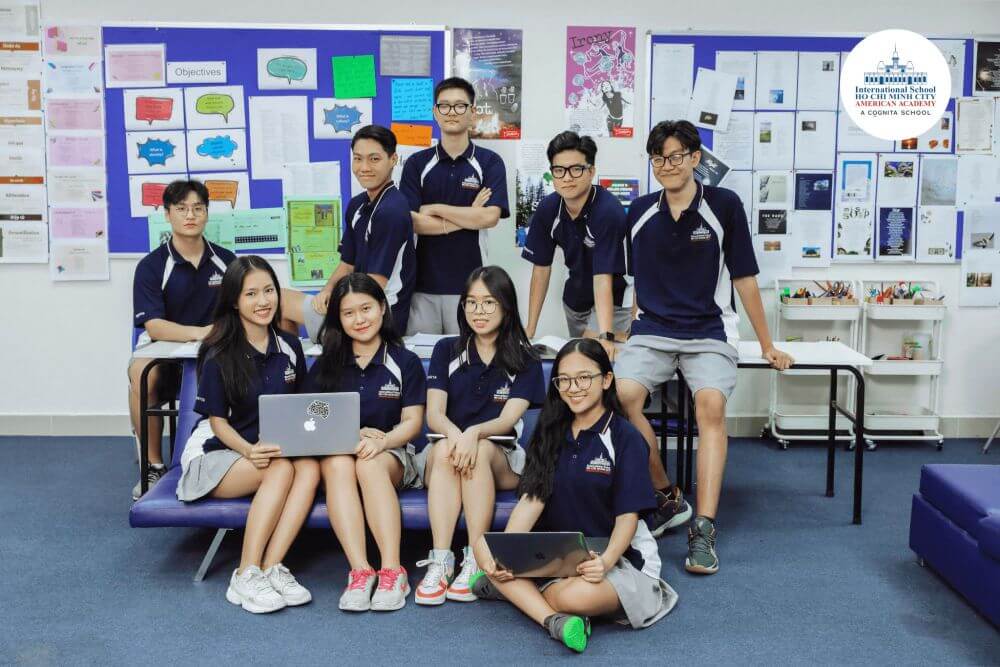Asian vs American education systems exhibit distinct learning cultures based on various societal, cultural, and historical factors. These differences manifest in diverse approaches to teaching and learning, curriculum design, assessment methods, and educational philosophies.
Understanding these distinctions can help educators and learners foster cross-cultural understanding and improve educational outcomes globally. This article delves into the nuanced dynamics of Asian education vs American education, exploring their impact on learning cultures.
Asian vs American Education – Basic Differences
Each system offers unique approaches to learning, from teaching methodologies to cultural values. We will delve deeper into these nuances to gain a comprehensive perspective.
| Asian Education | American Education | |
|---|---|---|
| Teaching Style | Teacher-centered, with an emphasis on compliance and authority. | Student-centered, emphasizes engagement and fostering a love of learning. |
| Role of Students | Receiving knowledge in a passive manner without engaging the learning process frequently. | Engaging, inquiring, and contributing to the learning process are all encouraged for active participants. |
| Assessment Methods | Pay attention to tests, quizzes, and numerical scores mostly determined by recall and memorization. | Places a strong emphasis on open-ended questions to determine comprehension. Tests and quizzes are examples of assessments. |
| Curriculum | Extensive and strict; emphasizes excellence while covering a wide range of topics. | Focuses on critical thinking and learning driven by interests; more flexible, with potential gaps. |
| Student-Teacher Interaction | Restricted and based on deference to authority. | Regular and supported. Educators are viewed more as mentors than ultimate authorities. |
| Pressure on Students | High as a result of the demanding curriculum and high standards for performance. Longer school days and additional courses. | Lower in general; with less demanding timetables and greater flexibility for students to pursue personal interests. |
Differences between American and Vietnamese Education
The educational landscapes of America and Vietnam exhibit notable distinctions in teaching methodologies, curriculum design, assessment practices, and extracurricular offerings. American education emphasizes interactive learning, critical thinking, and student engagement. Meanwhile, Vietnamese education prioritizes theoretical knowledge acquisition and examination performance.

- Teaching Style:
- Vietnamese education: emphasizes theoretical knowledge acquisition through teacher-led instruction, with limited classroom discussion or student interaction opportunities.
- American education: Fosters creativity and critical thinking and emphasizes interactive learning, class participation, and student-led discussions.
- Subjects:
- Vietnamese curriculum: Focuses on core subjects such as English, Vietnamese Literature, and Math, with limited options for elective courses or individual talent development.
- American curriculum: Offers diverse class options, including Arts and Sports, allowing students to explore their interests and develop their talents.
- Testing:
- Vietnamese assessment: Relies heavily on grades and standardized exams, and students are significantly pressured to excel academically to secure educational opportunities.
- American assessment: Considers various factors such as class participation, quizzes, homework assignments, and standardized exam scores, with increasing emphasis on holistic evaluation and personalized learning.
- Academic Awards:
- Vietnamese recognition: Encourages competition participation, with top performers earning additional points for high school or college entrance exams.
- American recognition: Emphasizes participation but is not a requirement in competitions, and recognition is often based on a broader range of achievements and contributions beyond academic excellence.
- Teaching Technology:
- Vietnamese schools: Limit access to educational technology, primarily relying on traditional teaching methods such as blackboards and occasional projectors.
- American schools: Utilize educational technology extensively, including digital presentations, Learning Management Systems (LMS), and interactive whiteboards, to enhance teaching and learning experiences.
- Extracurricular Activities:
- Vietnamese schools: Have had more extracurricular activities recently, with student-run organizations emerging but lacking structured programs compared to American schools.
- American schools: Have well-established extracurricular programs and offer diverse opportunities for student involvement in clubs, sports, and community service activities.
Asian vs American Education: Advantages and Disadvantages
The merits and demerits of Asian vs American education systems offer a deeper insight into their contrasting approaches. While both systems have unique strengths, they also face distinct challenges.
American Education: Advantages and Disadvantages
The American education system presents strengths and challenges impacting students’ learning experiences and outcomes.

Advantages:
- Critical thinking skills development: Emphasis on critical thinking fosters independent thought and innovation, essential for navigating complex issues in the modern world.
- Diverse extracurricular activities: Allows students to explore passions, develop teamwork, and foster personal growth beyond academics.
- Curriculum’s flexibility: Enables personalized learning experiences tailored to individual interests and strengths.
Disadvantages:
- High tuition fees: Costly higher education limits accessibility, particularly for lower-income individuals, perpetuating socioeconomic disparities.
- Overreliance on standardized testing: Emphasis on testing may hinder deeper understanding and critical thinking, detracting from overall educational quality.
- Educational inequality due to disparities: Discrepancies in funding resources exacerbate inequities in teacher quality, access to technology, and educational resources, disproportionately impacting marginalized communities.
Asian Education: Advantages and Disadvantages
Asian education systems, particularly exemplified by the Chinese model, have distinct pros and cons in shaping students’ learning experiences.

Advantages:
- High academic performance: Asian education emphasizes academic excellence in core subjects, leading to exceptional international performance and a culture of striving for excellence.
- Emphasis on discipline and hard work: A disciplined environment fosters essential skills like perseverance and a strong work ethic, valued in academia and professional settings.
- Strong focus on core subjects: Prioritizing subjects like science and math provides students with a solid academic foundation.
Disadvantages:
- Lack of creativity and critical thinking: Rote memorization and standardized curricula may hinder critical thinking and creativity, limiting students’ problem-solving abilities.
- Emphasis on rote memorization: Heavy reliance on memorization can impede understanding and practical application of knowledge.
- High pressure and competition: Intense focus on exams creates a stressful environment, potentially neglecting students’ mental well-being.
Differences in Parental Involvement Between Asian vs American Education
Parental involvement greatly impacts a child’s development and academic success. Asian and Western parental goals and teaching methods highlight key differences in family education practices.

- American Parents’ Objectives:American family education aims to nurture children as socially adaptable individuals with strong independence. Parents prioritize experiential learning and self-reliance, fostering independence and personal growth rather than solely focusing on academic achievement. This approach emphasizes personal growth over utilitarian goals, encouraging children to develop their worth and independence through various life experiences.
- Asian Parent’s Objectives:Asian parents often want their children to succeed academically and secure well-paying jobs. They prioritize academic performance, often at the expense of creativity and personal development. While striving to provide optimal conditions for their children’s growth, Asian parents prioritize future career prospects over qualities like independence and civic awareness.
Embrace The American Learning System with ISHCMC – American Academy
ISHCMC – American Academy understands the differences between Asian vs American education systems to provide valuable insights into our diverse approaches to learning. American education often prioritizes creativity, critical thinking, and holistic development than Asian systems, which emphasize academic rigor and discipline.

For Asian students seeking to experience the benefits of an American-style education, ISHCMC – American Academy offers an exceptional opportunity. With a student-centered approach, high flexibility, and a focus on personal growth, the ISHCMC – American Academy curriculum equips students with the skills and mindset needed to thrive in today’s dynamic world.
Book a tour now to provide your children with an enriching educational experience that prepares them for a bright future!
FAQs about Asian vs American Education
Now, we will explore some frequently asked questions to gain deeper insights into Asian vs American education.
1. How to choose an appropriate international learning system for children?
When selecting an international learning system for children, consider the curriculum, ensuring it promotes self-study and critical thinking.
- Choose programs aligned with future goals, such as an AP (advanced placement) program for top universities or a multilingual program for a global mindset.
- Prioritize schools with diverse extracurricular activities fostering holistic growth.
- Opt for schools with experienced, passionate teachers employing globally recognized teaching styles.
- Assess facilities and support services, ensuring a conducive learning environment.
2. What are the similarities between Asia and American education?
Both Asian and American education share similarities in curriculum and structure. Both follow similar subjects like biology, chemistry, history, and mathematics at school or college, which are essential for college preparation. They both employ a step-by-step system, progressing from primary school to college, with options for skipping grades based on students’ abilities.
3. What are the differences between Asian students and American students?
Here are the highlights between Asian and American students:
- Summer Activities:
- American students: Trips, internships, jobs.
- Asian students: Attending summer schools and intense study sessions.
- Program Selection:
- American students: Wide range of options with more discussion.
- Asian students: Pressure towards traditional fields like engineering, medicine, and law.
- Attire for School:
- American students: Relaxed clothing style.
- Asian students: More formal, especially for presentations.
- Participation in Class:
- American students: More upfront, opinionated, conversational.
- Asian students: Initially silent, take time to build up the courage to participate.
- Making Friends in Class:
- American students: More relaxed, easier socializing.
- Asian students: Less concerned with socializing, especially East Asians.






